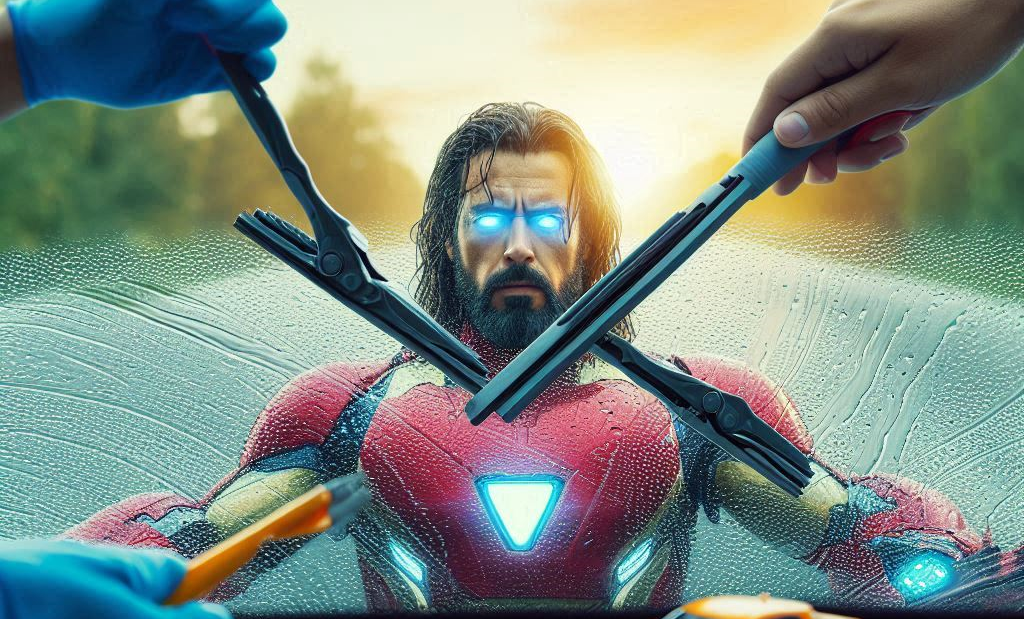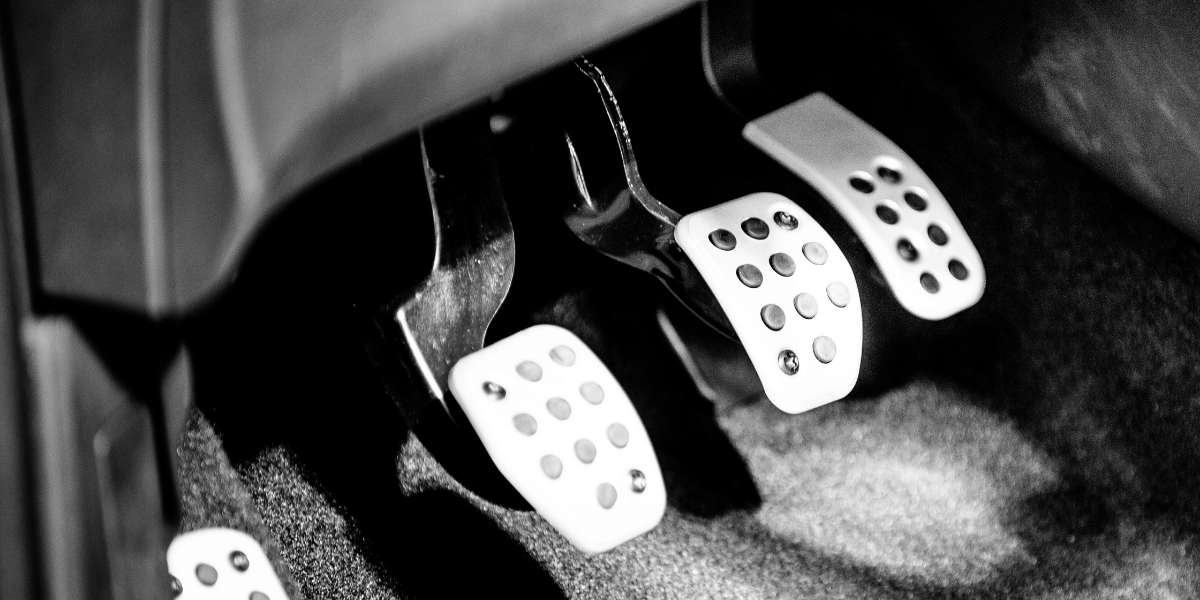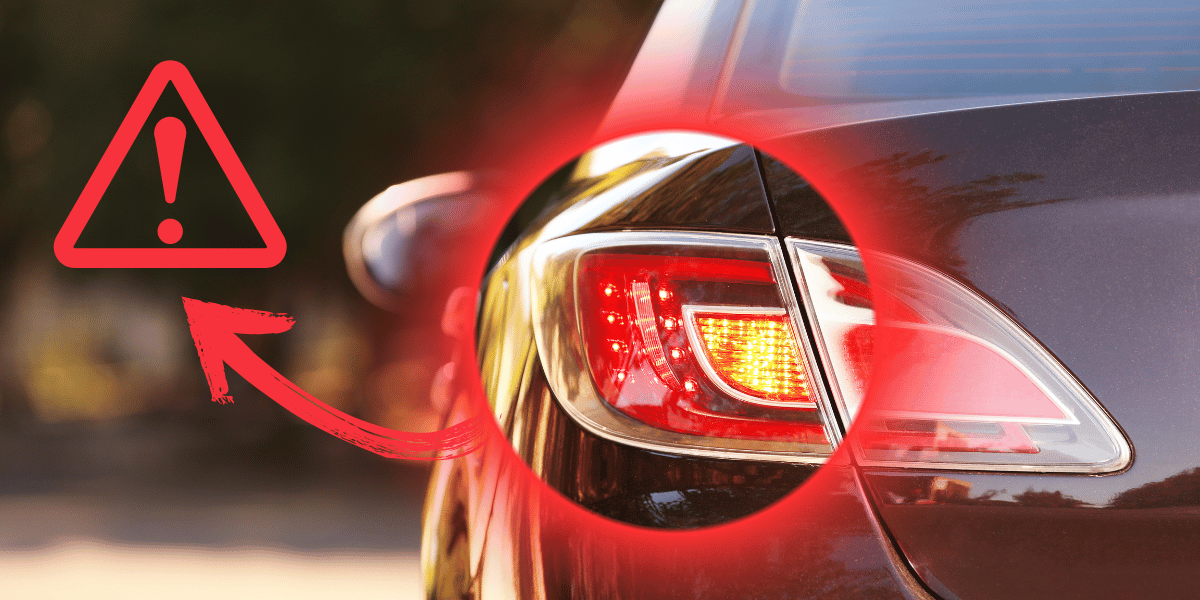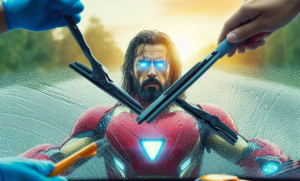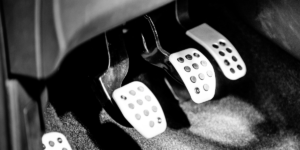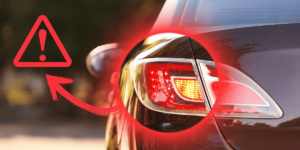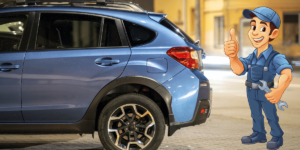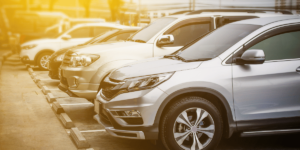In the past few years, automatic transmissions have become more common, and for good reason. Not only are they handy and easy to drive, but they are also getting better at using gas all the time. That being said, some people might want more power over their transmission, which is where D3 comes in. There is a setting on some automatic transmissions called D3 that only lets you use the first three gears. In many cases, this can be helpful, like when pulling a trailer, going down a steep hill, or getting through snow or ice. We’ll talk about what D3 is, how to use it, and when it’s most useful in this blog post.
What does D3 Mean in Car?
Drive 3 is what D3 stands for. On some automatic transmissions, this is where you set the gears so that the transmission can only use the first three speeds. Among other things, this can be useful when:
Pulling a trailer: The extra weight of pulling a trailer can put stress on the engine. By stopping the gearbox from shifting into higher gears, using D3 can help keep it in better shape.
Going down a steep hill: Using D3 can help you keep the car’s speed in check when going down a steep hill. Some people may not need to use the brakes as much, which can help keep the brake pads in good shape.
Tips for Driving in Snow or Ice: It’s important to have good grip when driving in snow or ice. Keeping the car in a lower gear while using D3 can help it grip the road better.
How Does D3 Work?
Just move the gear selector to the D3 spot to use D3. When you put the car in D3, the transmission will move smoothly through the first three gears. It will not move up to a higher gear, though. To get out of D3, all you have to do is move the gear switch to D. Then, based on your speed and acceleration, the transmission will shift into the right gear on its own.
When to use of D3?
D3 is useful when you need to slow down or improve the grip of the car, but it can also be used in other scenarios. Let’s look at some specific examples:
Pulling a trailer: As we already said, D3 can help keep the transmission in better shape when pulling a trailer.
Going down a steep hill: Using D3 can help you keep the car’s speed in check when going down a steep hill. Some people may not need to use the brakes as much, which can help keep the brake pads in good shape.
Tips for Driving in Snow or Ice: It’s important to have good grip when driving in snow or ice. Keeping the car in a lower gear while using D3 can help it grip the road better.
Getting past another car: If you need to get past another car on the highway, you can use D3 to boost the car’s speed.
Going off-road: You might want to use D3 to give the car more control and grip when you’re going off-road.
What is D2 and D3 in Automatic Transmission?
In an automatic transmission, D2 and D3 are places for selecting gears that only let the first two or three gears be used. There are times when this can be useful, such as when:
- Pulling a trailer
- Going down a rough hill
- Getting around in snow or ice
- Going by another car
- Drive off-road
Using D2 or D3 can help you slow down or speed up the car and make it grip better. It may also help keep the engine and brakes in better shape.
In the following situations, you should use D2 and D3:
- Pulling a trailer: The extra weight of pulling a trailer can put stress on the engine. By stopping the gearbox from shifting into higher gears, using D2 or D3 can help keep it in better shape.
- Down a steep hill: Pressing D2 or D3 can help you keep the car’s speed in check when going down a steep hill. Some people may not need to use the brakes as much, which can help keep the brake pads in good shape.
- Tips for Driving in Snow or Ice: It’s important to have good grip when driving in snow or ice. Keeping the car in a lower gear when you use D2 or D3 can help improve its grip.
- To pass another car: If you need to get past another car on the highway, you can use D2 or D3 to boost the car’s power.
- Going off-road: You might want to use D2 or D3 to give the car more control and grip when you’re going off-road.
Important: Do not use D2 or D3 on highways or other fast roads. This is because D2 or D3 will keep the engine going at a higher RPM, which can waste more gas and make the engine wear out faster. Use D2 or D3 only when you have to, like when you’re pulling a trailer or going down a high hill. Please keep in mind that not all automatic transmissions have D2 and D3 settings. Check your owner’s manual to see if you know if your car has D2 and D3.
What does D1 D2 D3 D4 Mean in Automatic Cars?
On automatic gearboxes, D1, D2, D3, and D4 are all places where you can choose a gear. They make it so that the transmission can only use the first, second, third, and fourth gears. Most automatic transmissions set the gear selector to D4 by default. It makes it possible for the transmission to use all of its gears, which improves speed and gas mileage. There are many times when D1, D2, and D3 can be useful, such as:
Pulling a trailer: The extra weight of pulling a trailer can put stress on the engine. By stopping the transmission from moving into higher gears, using D1, D2, or D3 can help keep it in better shape.
If you’re going down a high hill, you can help control the speed of the car by pressing D1, D2, or D3. Some people may not need to use the brakes as much, which can help keep the brake pads in good shape.
Tips for Driving in Snow or Ice: It’s important to have good grip when driving in snow or ice. By keeping the car in a lower gear, D1, D2, or D3 can help improve grip.
To pass another car: Press D1, D2, or D3 to give the car a little more power if you need to pass another car on the highway.
Going off-road: You might want to use D1, D2, or D3 to give the car more control and grip when you’re going off-road.
Important: Do not use D1, D2, or D3 on highways or other fast roads. This is because D1, D2, or D3 will keep the engine running at a higher RPM, which can waste more gas and make the engine wear out faster. Use D1, D2, or D3 only when you have to, like when you’re pulling a trailer or going down a high hill. Keep in mind that not all automatic transmissions have settings D1, D2, and D3. Check your owner’s manual to see if you know if your car has D1, D2, and D3.
How fast can a Honda Civic go on D3?
In a Honda Civic, the fastest speed you can go on D3 varies on the model year and how the engine is set up. On the other hand, D3 is usually fine for driving up to 60 mph. It’s important to keep in mind that driving fast in D3 for long amounts of time can damage your engine and transmission more than it needs to. Also, driving fast in D3 uses more gas than driving fast in D4.
What’s better about D3 than D4?
The following are good things about D3 over D4:
- More power and torque: D3 only lets the first three gears be used by the transmission. This lets the engine run at a higher RPM, which makes more power and torque. This can come in handy when pulling a trailer, going around another car, or driving off-road.
- Better engine stopping: D3 can also help the engine stop better, which can be helpful when going down a high hill or when the road is wet.
- More precise control: D3 can give the driver more precise control over the speed of the car, which can be helpful when going off-road or on rough terrain.
But there are also some bad things about using D3: - Less fuel efficiency: D3 can lessen fuel efficiency because it keeps the engine going at a higher RPM.
- More wear and tear: Using D3 for long amounts of time can also make the engine and transmission wear out faster.
Overall, D3 is a good place to choose a gear because it can be used in many settings to make the engine run better, be easier to control, and stop. But D3 should only be used in small amounts because it can waste fuel and make the engine and transmission wear out faster.
Why is the Honda Civic Automatic Transmission Excellent?
Automatic gears in Honda Civics are known for being reliable, smooth, and good on gas. Because of the following reasons:
- Honda’s Continuously Variable Transmission (CVT): Most of Honda’s Civic cars have a CVT. The gear ratio can be changed indefinitely with a CVT, which is a type of automatic drive. This lets the engine run at the RPM that makes the most power at any speed.
- Honda’s Earth Dreams Technology: Honda’s Earth Dreams Technology is a group of technologies that are meant to make cars use less gas and put out less pollution. The CVTs made by Honda are part of Earth Dreams Technology. They save gas because they use low-friction materials and control methods that work well.
- Quality engineering from Honda: Honda is known for making high-quality cars, and its automatic gears are no different. There is a long warranty on Honda CVTs because they are made to be effective and last a long time.
For example, here are some good things about a Honda Civic automatic transmission:
- Comfort: Honda’s CVTs are known for running smoothly. A computer constantly changes the gear ratio in the CVT, so there are no obvious shifts in gear. This makes the drive experience very comfortable and fun.
- Fuel economy: Honda’s CVTs use very little gas. When it comes to gas mileage, the Honda Civic is one of the best cars on the market.
- Dependability: Honda’s CVTs work well most of the time. If you take care of them, they should last for many years.
Overall, a Honda Civic’s automatic transmission is a great choice for drivers who want a transmission that is reliable, quick, and good on gas.
Automatic Transmission vs Manual Transmission Comparison?
There are many reasons why automatic transmissions are better than manual transmissions. Here is the Comparison Table of Automatic Transmission vs Manual Transmission, most of time it’s depend on your own choice like personal preferences, driving habits, and specific needs etc.
| Aspect | Automatic Transmission | Manual Transmission |
|---|---|---|
| Simple to Use | Easier to use, doesn’t require clutch or manual shifting | Requires learning how to use a clutch and shift gears manually |
| Easy for Traffic | Better for stop-and-go traffic, but can be tiring in heavy traffic due to frequent gear changes | Can be tiring in heavy traffic due to frequent gear changes |
| Smooth Gear Changes | Provides smoother gear changes for a comfortable ride | May have quicker gear changes, which can feel rough |
| Fuel Efficiency | Historically less fuel-efficient, but newer models are improving | Generally more fuel-efficient, especially when driven skilfully |
| Total Control | Offers less direct control over gear selection | Provides full control over gear shifts for an engaging driving experience |
| Maintenance Costs | May require more maintenance with potentially higher repair costs | Often simpler and less costly to maintain and repair |
| Initial Cost | Typically slightly more expensive | Generally less expensive |
| Anti-Theft Deterrent | Less likely to be stolen due to fewer thieves proficient in manual driving | More appealing to car thieves, especially in regions where manuals are rare |
| Availability | Widely available in many vehicle models | Availability may be limited, especially in certain regions |
| Resale Value | Generally retains its value better in the used car market | May have lower resale value, as automatics are often preferred |
| Engagement in Driving | Offers less direct engagement for driving enthusiasts | Provides a more engaging and involved driving experience |
| Learning Curve | Easier for beginners, no need to learn manual shifting | Requires learning how to use a clutch and shift gears manually |
| Long-Term Ownership Costs | Potential higher long-term ownership costs | Generally lower long-term ownership costs |
Remember that whether you choose an automatic or manual transmission relies on how you like to drive and what you need from your car.
Is the transmission in the Civic Reliable?
Yes, the gearbox in the Honda Civic is generally thought to be reliable. Honda’s CVTs are known for being strong and lasting a long time. Honda even backs up its CVTs with a long warranty, which shows how reliable they are. But, just like any other transmission, the Civic transmission can have issues if it isn’t taken care of properly. It is important to have the transmission serviced regularly, as suggested by the maker. This will help keep problems from happening and make the transmission last longer.
Here are some ways to keep the engine in your Honda Civic in good shape:
- Make sure the transmission oil is changed often. It is suggested that you do it every 30,000 miles or every two years, whichever comes first.
- Often check the amount of the transmission fluid and add more if needed.
- Do not drive if the gearbox fluid is low or dirty.
- Try not to change gears too fast or rough.
If you spot any problems with the transmission, like slipping, grinding, or strange noises, you should have a qualified mechanic look at it. If you keep these tips in mind, the engine in your Honda Civic should last for many years.
Honda Civic Safety Features
There are many safety measures on the Honda Civic, such as:
- Advanced Compatibility EngineeringTM (ACETM) body structure: This body structure is meant to protect people inside the vehicle in case of an accident by spreading the force of the impact throughout the vehicle.
- Vehicle Stability AssistTM (VSA®) with Traction Control: This technology brakes certain wheels and changes the engine’s power to keep the car from skidding or losing control.
- Rereview camera with multiple angles and lines: The camera gives you a big picture of the area behind the car, which helps you back up and park.
- Electronic Brake Distribution (EBD): This system sends braking power to the front and back wheels depending on how heavy the car is and how the road is.
- Brake Assist: This device makes it easier for the driver to stop in an emergency.
- Hill Start Assist: The car won’t roll backwards when you start it up a hill.
- Tire Pressure Monitoring System (TPMS): This system checks the tire pressure and lets the driver know if it drops too low.
- Driver and front-passenger front airbags:: There are front airbags for the driver and front passenger. These airbags protect the driver and front passenger in the event of a frontal accident.
- Front-passenger and driver knee airbags: These airbags protect the knees of the front passenger and driver in the event of a frontal impact.
- Driver and front-passenger front side airbags: These airbags protect the torsos of the driver and front passenger in the event of a side-impact crash.
- Side curtain airbags with rollover sensor: These airbags protect the driver, front passenger, and back seat passengers in the event of a side-impact or rollover accident.
- LATCH system: This system lets parents safely put kid safety seats in the back seats of their cars.
The Honda Civic comes with these safety features as standard, but you can also choose to add a number of other optional safety features, such as
- Blind Spot Information System (BSI): checks the blind spots and lets the driver know if there is another car there.
- Rear Cross Traffic Alert (RCTA): This system watches the area behind the car and lets the driver know if another car is coming up behind them while they are backing up.
- Adaptive Cruise Control (ACC): When a car drifts out of its lane, Lane Departure Warning (LDW) lets the driver know.
- Adaptive Cruise Control (ACC): This technology keeps your car a safe distance from the car in front of you.
- CMBS®: Collision Mitigation Braking System: This system can put on the brakes immediately to help avoid a crash.
One of the safest cars on the road is the Honda Civic. If you and your friends are in an accident, its safety features can help protect you.
FAQs about What does D3 Mean in Car?
Q: When shouldn’t I use D3?
A: You should not use D3 on roadways or other fast roads. This is because D3 will keep the engine running at a higher RPM, which can waste more gas and make the engine wear out faster.
Q: Can I always use D3?
A: No, you shouldn’t always use D3. This is because D3 will keep the engine running at a higher RPM, which can waste more gas and make the engine wear out faster. Use D3 only when you have to, like when you’re pulling a trailer or going down a steep hill.
Q: If I use D3, will it hurt my transmission?
A: If you use D3, it won’t hurt your transmission, no. But you shouldn’t use D3 all the time, because that can damage the transmission faster than it needs to.
Conclusion
When it comes to cars, knowing how to use the different settings and tools can make the experience better and help you make smart choices. Many automatic transmissions have a gear selection called “D3,” which stands for “Drive 3.” This gear selection is used when extra power and control are needed. If you know when and how to use D3, you can get the most out of your car and make sure it runs at its best in all kinds of driving situations. You’ll be sure to use that D3 lever when it means most the next time you see it on your gear shifter. Drive on, knowing that you have the power to do so!

